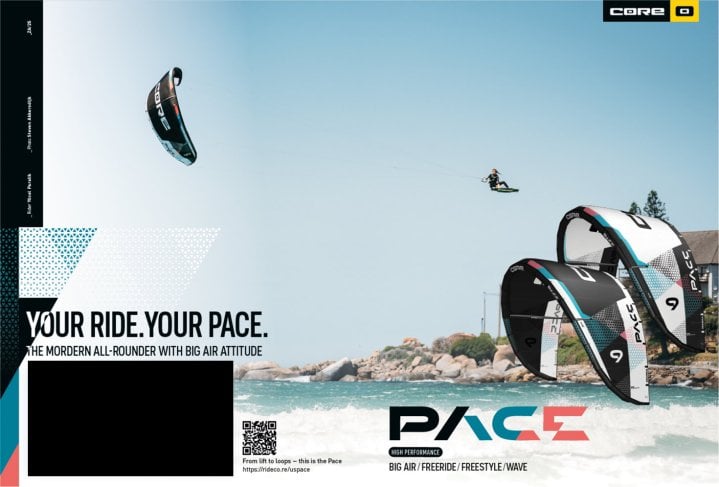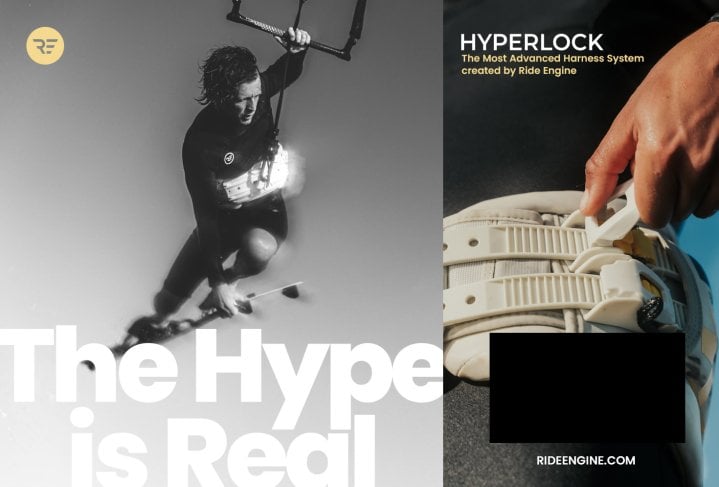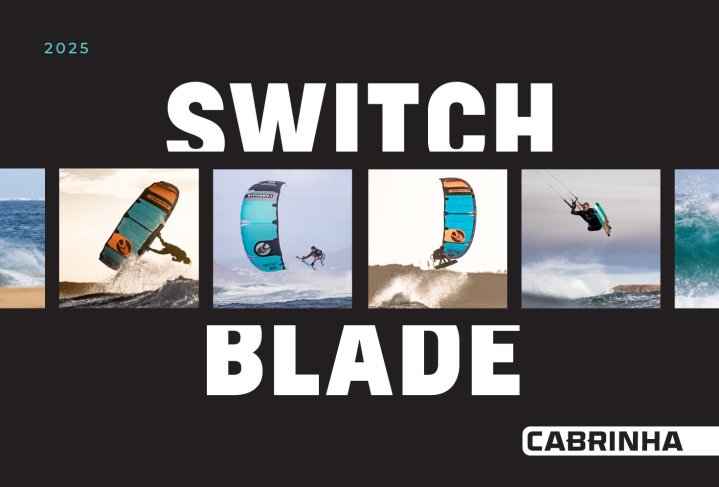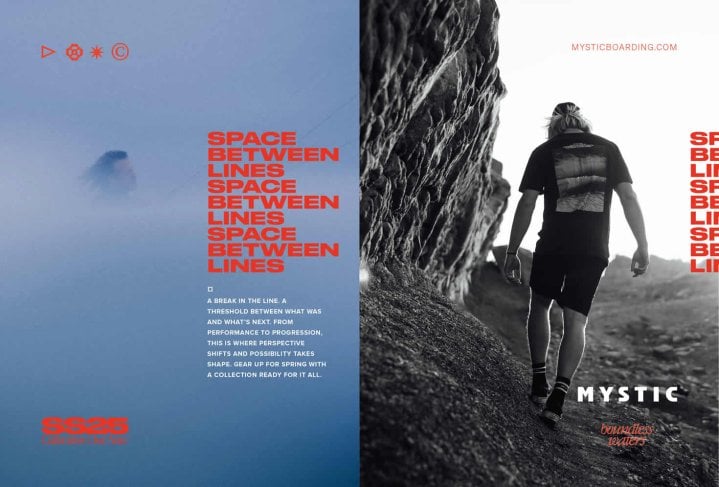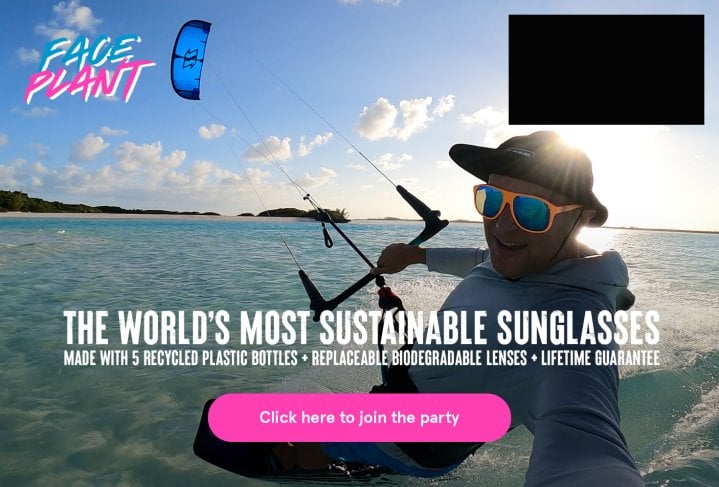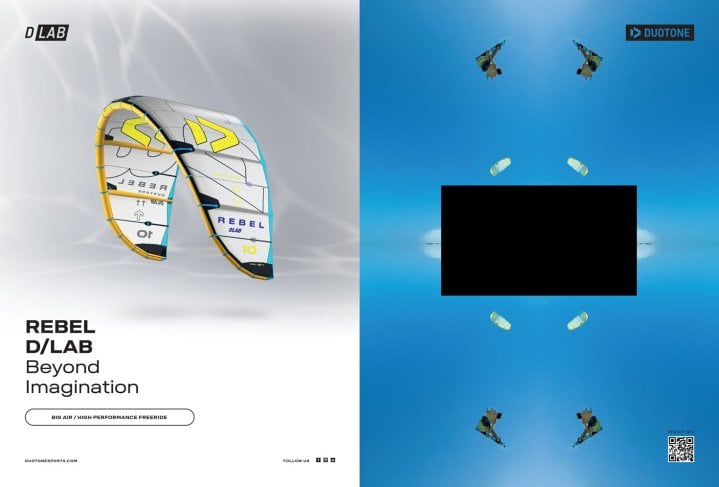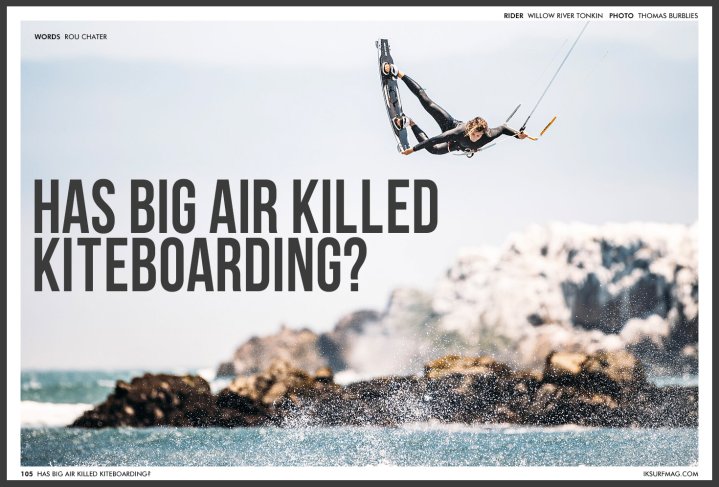
Has Big Air Killed Kiteboarding?
Issue 105 / Mon 24th Jun, 2024
With the spotlight firmly on big air right now, does it come at the detriment of the many facets of our sport, or even perhaps the very sport itself? At the risk of being burned at the stake, Rou Chater dives deep into the abyss…
The rampant rise of big air kiteboarding is undeniable, and if you are fairly fresh into the sport, say five years, and perhaps consider yourself an old hand, then it might be all you know. But believe it or not, it wasn’t always like this. Sometimes, a bit of history and context can be a good thing, so let's start there.
When kiteboarding first hit the water in the late nineties, the thrill was undeniable. At the time, windsurfing was the big water sport, and while it had developed into a crazy behemoth of a sport with intricate tricks and loops, it was hard. To get good at windsurfing took years, perhaps a decade, to even get close to being good. It was a hell of a time investment, and that was a huge barrier for a lot of people.
Then along came kitesurfing, or kiteboarding, depending on which side of the pond you are on. With a huge, powerful kite, suddenly you didn’t need a degree, master's, PhD and doctorate in windsurfing to be able to jump ten feet. Literally, any idiot could simply steer the kite and get launched into oblivion. The landing was a different story; landing on the water in one piece was another matter altogether.
The hook was obvious if you are reading this because you kite and know the buzz and adrenaline of hooking in and launching a death machine above your head. Thankfully these days, we’ve got the safety side of things a little more dialled, but a kite will quite happily hand your ass to you on a plate all the same, given half a chance.
At the sport's inception, jumping big was the thing. Then came the spins, loops, and board-offs, all backed by the basic premise of jumping big. Now, for the newcomers, you might not believe this, but as kiting evolved in the mid-noughties, wakestyle riding took over, and suddenly, using the kite to gain height for a trick was deemed a huge no-no.
And I mean huge. Riders were ridiculed if they performed any tricks with the kite above 45 degrees or sent the kite back in any way. In competitions, you got marked down for it. Foot straps were uncool, and it was all about riding boots and trying to pretend you were a wakeboarder, just with a kite and not a boat. It wasn’t necessarily a good thing for the sport, but that is immaterial.
Beginners learning to kite wanted to master the handle pass or raley (note the spelling of that trick; there is no I in raley). The focus was so firmly on this style of riding that it dominated the product design cycle, and it was all you saw on beaches; riders were just looking to progress their freestyle tricks. The whole industry was focusing on this: competitions, equipment, media, everything said sending a kite to go big was just not cool, and people who did were very much on the fringe.
There were a few exceptions, well, maybe one; Ruben Lenten, while still doing all the freestyle and wearing boots, would occasionally go out in some mega storm and send it as he perfected the Megaloop. We published a video of this in 2006 in our first issue, but when you consider that it was 100 pages of freestyle and one nod towards the intriguing storm chasing Ruben was doing, it gives you an idea of the zeitgeist of the time.
So, for context, big air hasn’t always been cool. In fact, if you do a board off at a spot, you might be treated back on the beach like a pig at a bar mitzvah. Of course, Freestyle/Wakestyle had its moment in the sun, quite literally, but with kiteboarding being such a diverse sport with the ability to ride so many different types of craft, it didn’t last forever.
I’ve got Fiddy bucks for anyone who can tell me who the current top three riders are on the GKA freestyle tour… I’ll keep my money because 99% of you don’t know. Heck, I’d have a good guess myself, but I’d be wrong. Freestyle, wakestyle—it’s dropped so far off the radar of the masses that it’s untrue.
It’s not the only victim, though. I remember being excitedly told once that there were more people riding strapless surfboards in Tarifa than there were twin tips. Why’s that important? Well, if you’ve ever been to Tarifa, you’ll know it’s just about the world's worst wave spot. Every once in a blue moon, when the moon aligns with Uranus, it gets a wave, but it’s a twin-tip spot and always has been.
What caused this rare natural phenomenon, strapless freestyle? Mitu Monteiro, Airton Cozzolino, and Matchu Lopez seemingly created this genre out of nowhere, and now it was mainstream. Brands were selling more surfboards than twin tips. The Mitu Monteiro Pro Model from F-ONE was the best-selling board in the world for a number of years.
All the media, competitions, and brands were focused on this, and it was a kind of wild time. In my opinion, it wasn’t very inspirational for the average kiter. The tricks were so impossibly hard that it was difficult to see how you could ever go from being a humble beginner to pulling an unstrapped triple front roll.
However, it caught the mood then; it seemed like Strapless was here to stay. The brands were selling more surfboards than twin tips. Just ponder that for a moment. It was a crazy time for sure in kiteboarding's storied history. Then, like a bolt from the blue, the hydrofoil arrived…
They’d been around for a while, but in 2015, they were popularised from a racing niche to the mainstream, with brands like Liquid Force and Slingshot getting reasonably priced, easy-to-ride gear to the market. Suddenly, kiting was all about foiling… Although foiling never took off like strapless did, it made up a considerable chunk of the brand's turnover for a while.
And here’s the rub: Kiting is so good at being so many things to so many people. In my eyes, a good kiter should be able to embrace all aspects of this sport. They should be proficient on a twin tip, able to throw a few unhooked tricks, capable of riding a surfboard in the waves, bust a few strapless tricks, and know their way around a foil…
Sadly, a lot of these skills are becoming forgotten arts… It’s a big air fault…
Ten years ago, the King of the Air gave Big Air a rebirth. From small acorns, it developed into the behemoth it is today. The world’s biggest kiteboarding competition caught the attention of the masses in a big way. However, there was a product that helped turn Big Air into what it is today.
In January 2015, the WOO was launched. This little blue box promised to end the speculation of who could jump the highest once and for all. It is an accelerometer that you attach to your board, with a cool interface and an app that allows you to compete not only on a global level but also locally with your mates. Personal bests, mini competitions, and the gamification of kiteboarding were born.
Fast forward almost ten years and big air is bigger than any discipline in this sport. Everyone talks about it, watches the live streams, knows who’s pulling the latest tricks and gives thousands of little thumbs up on the social media shorts accompanying your morning coffee.
It’s the kind of domination that I’ve not seen in the sport before, and I worry that it’s slowly killing kiteboarding. Before you call me a witch and grab a pitchfork, hear me out…
Kiteboarding has been a success because of its diversity. You can be many things when you are a kiteboarder. You can be a beginner, intermediate, or expert. You can ride a twin-tip, surfboard, or foil. You can ride flat water, waves, or obstacles in the park. You can cruise in light winds or go big in strong winds… You have a freedom that not many other sports offer.
Big air, for me, is stifling that. When was the last time you rode a kitefoil, slayed some waves, or busted some unhooked tricks? Kitefoiling feels like a forgotten art; it’s not even something new riders aspire to or have on their radar because all they want to do is go bigger and bigger and ride stronger and stronger winds…
This leads me to my next point: Kitesurfing is a sport that can be enjoyed in such a wide range of conditions. It’s why I got into the sport; the thought of being able to cruise in 12 knots on a huge kite was a massive draw for me. These days, the biggest kite in the average quiver is 12m. Naish once produced and sold a 30m kite. Ponder that for a moment, haha.
Worse than that, most kiters are just hunting stronger and stronger winds so that they can boost higher and higher, and when those conditions don’t come, they are bummed out… I read WhatsApp groups complaining about a lack of wind, and I think to myself, I’ve been on the water every day this week, and it’s been incredible.
Kiteboarding should be about embracing every possible opportunity to get on the water and be free, whether on a twin-tip, surfboard, skimboard, foil, wakeskate, or even a tea tray. Kiteboarding is about having fun, and while sending it to the moon in 40 knots is a whole bunch of fun, we’re so much more than that, and I feel like, as a sport, it’s getting lost in the big air hype.
This also means that the development money within the sport is being spent in one particular place. There is a huge pressure and focus on brands to have a big air kite, and that is where the bulk of the prototyping and development goes, at a detriment to other products in the lineup, and that’s a bad thing for you as a kiter…
There’s a good chance you are reading this thinking, “I’ve got a foil, a surfboard, a twin tip, and I get out whenever I can, no matter the conditions”. Kudos to you; you are one of the few… There’s a higher chance you are reading this, having long since sold your foil and surfboard, and you’re addicted to looking for purple colours on Wind Guru and checking the leaderboards on WOO daily.
That’s fine too, and kiteboarding is about doing whatever the hell you like after all, but maybe, just maybe, think about the endless possibilities this amazing sport offers us. Then think if you are maximising your opportunities or sulking at a wind forecast that is only 20mph…
As a magazine, we have always tried to embrace every aspect of this sport and support it. Moving forward, we will continue to do so. It's an exciting year for kiteboarding, after all. With the Olympics in Paris coming up this summer, how many of you wish it was a big air event, though? I rest my case.
Kiteboarding is arguably one of the few sports that allows us to do so much once we have learned the basics of flying the kite. If we keep pigeonholing it into just being focused on big air, then the danger is that the sport dries up and becomes about one thing…none of us want that!
Why would it dry up? Windsurfing did the same thing years ago; it went from being a fun sport you could do in any condition to a sport purely focused on high-wind, adrenaline-filled action. The problem is that the weekend warriors with day jobs who are the backbone of the sport get despondent.
There are only 52 weekends in the year. If they spend a few of those at family functions, 50% aren’t windy, and they are only happy if it’s blowing 30mph plus so they can get their WOO on; the sport is doomed. They’ll get disenfranchised, try other things, discover road cycling is more bang for their buck (it isn’t), and we lose more kiters.
If it can happen to windsurfing, it could happen to us, but if we embrace the many arms of kiteboarding as solid aspects of the sport worth pursuing, we can keep the dream alive…
I firmly believe that it’s a dream well worth keeping alive. Dream about those magical storm days if you wish, but don’t forget everything else this incredible sport can bring you. It’s quite literally the stuff dreams are made of!
By Rou Chater
Rou has been kiting since the sports inception and has been working as an editor and tester for magazines since 2004. He started IKSURFMAG with his brother in 2006 and has tested hundreds of different kites and travelled all over the world to kitesurf. He's a walking encyclopedia of all things kite and is just as passionate about the sport today as he was when he first started!


